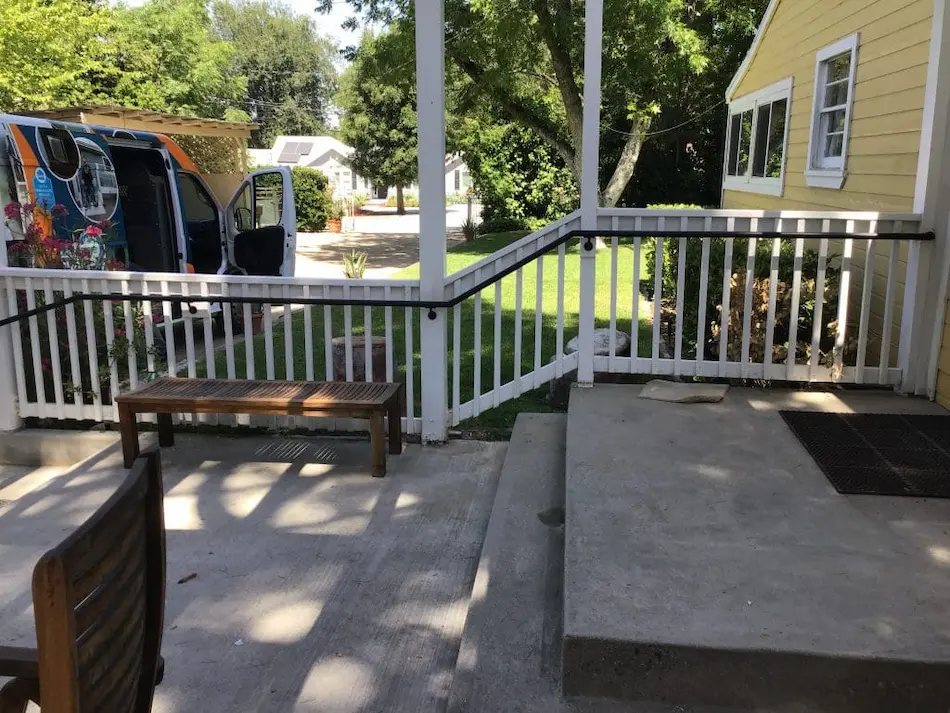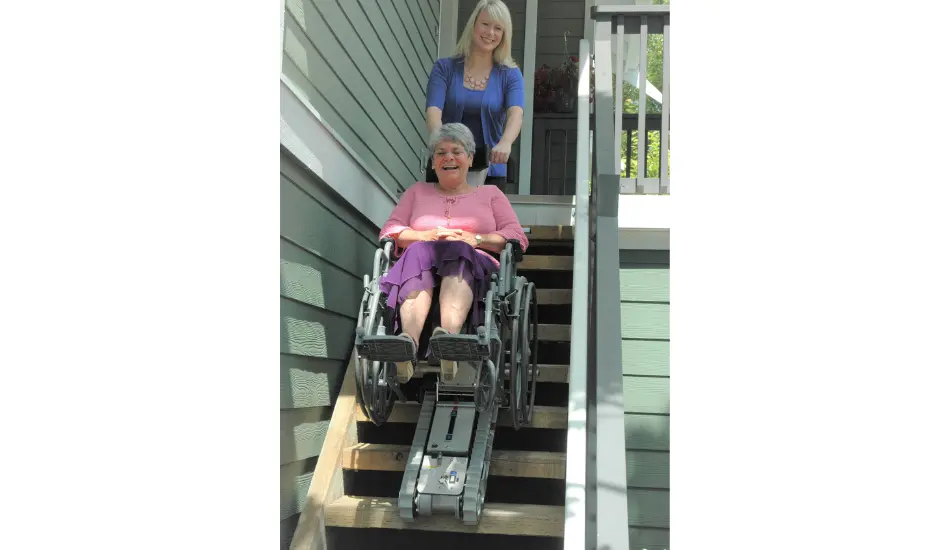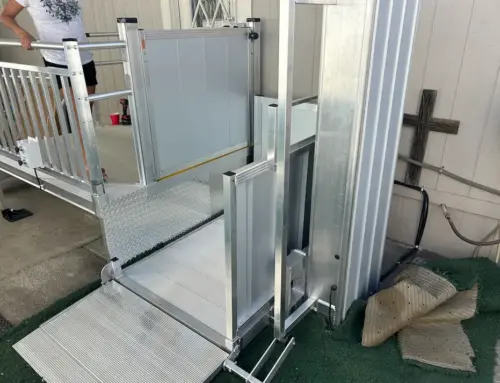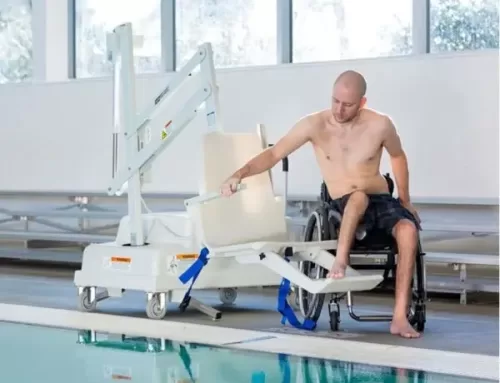Your elderly loved one takes a small misstep, loses their balance, and before you know it, they’ve taken a tumble. It’s scary and unimaginable, but it’s not an uncommon scenario.
According to the Centers for Disease Control and Prevention (CDC), falls are a leading cause of injury among older people aged 65 years or more living in the community. These incidents often result in fractures or even admission to nursing homes.
Falls among the elderly are more prevalent than we might think. However, here’s where technology takes action. Assistive devices to prevent falls in the elderly have become increasingly important, and they can make all the difference between safety and potential injury.
It’s an important topic, so let’s discuss different types of support devices available specifically designed to prevent such accidents from happening again!
Types of Assistive Devices to Prevent Falls in the Elderly
When it comes to preventing falls, there are some amazing devices out there that can make your life easier and safer. They come in different shapes, sizes, and purposes, but all are useful. Apart from cane or walkers, imagine wearing a device that can detect if you’re about to fall. Technology is working wonders in this sector!
When these gadgets are by your side, there’ll be less risk of falling, so you can keep living life independently and confidently. Let’s check them out!
1. Mobility Aids
-
Canes
A cane is an important mobility aid that helps you stay stable and supported while you walk. Using a cane can make a huge difference in how well you can go about your daily life, whether it’s because your muscles are weak or your joints hurt.
Simply hold it on the opposite side of your weaker leg, redistribute weight, and enjoy more stability as you confidently take each step forward.
-
Walkers
Walkers are a better choice with a stronger support system. They’re great for people who have trouble moving around and need extra assistance while walking. It is very important to adjust the height of the walker to get the right fit and stance. This will help you walk more easily and with trust, giving you additional help along the way.
There are different types of walkers, like common walkers and rollators, which have wheels to make them easier to move around.
-
Wheelchairs
Wheelchairs offer the freedom and independence to move around comfortably, even when walking is a challenge. The selection of a wheelchair depends on a person’s specific needs and abilities.
There are manual wheelchairs; they require self-propulsion or someone else pushing them. Meanwhile, electric wheelchairs have battery-powered motors for effortless movement. It’s important to consider factors like maneuverability, comfort, and ease of use when choosing the right wheelchair for you or your loved one.

2. Monitoring Systems
-
Fall Detectors
Fall detectors are a type of monitoring system that can be wearable or stationary. These clever devices automatically detect when someone is falling and send alerts to caregivers or emergency services. It’s simple peace of mind for both the elderly person and their loved ones.
It’s important to use these devices consistently by wearing them and ensuring they are charged or powered at all times.
-
Motion Sensors
Motion sensors are a great way to make your home safer. Smart devices like these can be put in living areas in an intelligent way to pick up on any strange moves or a lack of activity. When they are connected to an alert system, family or workers can be notified if there is a possible risk.
Remember that the right way to use these sensors is to put them in the right place and test them often to make sure they’re always working properly for the best fall prevention results.
-
Video Monitoring
Video cameras can be an effective tool for continuous monitoring in areas of the home where falls are more likely to occur. You need to place cameras strategically, such as near staircases or other fall-risk spots, to ensure that caregivers can keep a close eye on their loved ones without invading their privacy. You can respond quickly to any situation, too, with this additional safety measure.
3. Home Modifications
-
Handrails and Grab Bars
One of the simplest yet effective ways to prevent falls at home is by installing handrails and grab bars in critical areas. These types of modifications mean extra support for stability, especially in places like bathrooms, hallways, and staircases where balance may be a concern.

Always choose sturdy options that are slip-resistant. Also, you will enjoy maximum effectiveness with proper installation. To keep these safety features reliable, regular inspections for stability should be conducted.
-
Non-Slip Flooring
In the quest to create a safe home environment for seniors, one important improvement is installing non-slip flooring. Using materials that reduce slipping hazards is essential in preventing falls. Whether it’s choosing tiles with textured surfaces or using rugs or non-slip coating, these small adjustments can make a big difference.
Remember, maintenance plays a vital role, too! Regularly cleaning and keeping floors in good condition is crucial to make sure their anti-slip properties stay effective over time.
-
Ramps
Ramps provide a smooth and accessible way to navigate steps or uneven surfaces, making it easier for older adults to move around safely.
When installing a ramp, always consider the right angle and ensure that handrails are present for extra support. Keeping the surface clear of debris and regularly checking for any damage is also important in maintaining its usability.

4. Emerging Technologies
-
Wearable Fall Detection Devices
Imagine having a small device on your wrist or around your neck that can detect if you’re about to take a tumble. These wearable fall detection devices use accelerometers and gyroscopes to sense changes in movement and alert caregivers or emergency services when a fall occurs.
Just wear it as instructed, keep it charged, and enjoy peace of mind, knowing help is just one touch away!
-
Artificial Intelligence-driven Monitoring Systems
Innovative technologies are taking fall prevention to the next level with AI-driven monitoring systems. These advanced systems use artificial intelligence algorithms to analyze movement patterns and behavioral changes that could indicate a risk of falling.
As you set up these intelligent devices according to guidelines and keep them updated, you can stay one step ahead in containing falls and ensuring your safety.
-
Telehealth and Telemonitoring
The method by which seniors get medical care has changed a lot because of telehealth and telemonitoring. Healthcare workers can check on a person’s health and mobility from afar with these tools. It means checking in on a daily basis, scheduling appointments, and making sure all the right tools are available.
With these cutting-edge tools, seniors can get the care they need without having to leave the safety of their own homes.
-
Smart Home Technology
In this digital age, our homes are getting smarter, too! With voice-activated assistants like Amazon Echo or Google Home and smart lighting systems, you can easily control your home environment with just a few words.
These gadgets not only make life easier, but they also keep you safe by letting you set them to do things automatically, like turning on lights when it gets dark. Imagine having the ability to lock doors remotely or receive notifications if a door is left open. It’s all possible with smart home technology!
Choosing the Right Assistive Device
With these devices, one size certainly doesn’t fit all. Each individual has unique conditions and challenges, which is why selecting the appropriate tool for fall prevention needs careful consideration.
Here are some factors to consider when choosing an assistive device:
- Evaluate Mobility Level: Assessing your loved one’s mobility and balance will help determine whether a cane, walker, or wheelchair would be most suitable.
- Consult with a Professional: Consult and take suggestions from an occupational therapist who can assess specific fall risks and recommend proper devices.
- Consider Lifestyle and Environment: Think about where the majority of falls occur—whether it’s indoors on slippery floors or outdoors on uneven surfaces. Then, select a device that caters to those occasions.
- Test Before Committing: Try out different options, either through rentals or borrowing from friends, to ensure comfort and ease of use.
Finding the right assistive device may take time, but investing in safety is worth every effort!
Maintenance of Assistive Devices and Technology
Like any gadget, you need to take the best care of all kinds of assistive devices. You don’t want a faulty device to be the reason for any accident. Here’s how you do the maintenance:
Regular Inspection
It’s crucial to regularly inspect your assistive devices for any signs of wear and tear. Check for loose parts, damaged handles, or malfunctioning features. Any of these can compromise the gadget’s effectiveness in preventing falls. Don’t forget to consult the manufacturer’s guidelines or seek professional help whenever you need it.
Cleaning
You need to regularly wipe them down with a damp cloth and mild soap to remove dirt and bacteria. For example, regularly clean the handrails and grab bars in the bathroom to maintain hygiene.
Battery Maintenance
Ensure that the batteries in your assistive devices are fully charged or replaced regularly. A dead battery at a critical moment can put your loved one’s safety at risk.
Repairs
If you notice any issues with your assistive device, don’t try to fix it yourself. It’s best to reach out to a professional for repairs.
Conclusion
When it comes to the safety of our elderly loved ones, employing assistive devices is, without any doubt, a good decision. We can greatly lower the risk of falling by
- Using mobility aids like walkers, canes, and wheelchairs.
- Installing monitoring systems like motion and fall detectors.
- Making necessary changes to our homes, like adding handrails and non-slip flooring.
- Adopting new technologies like smart homes and wearable fall detectors.
At Call Before You Fall, we acknowledge how important these preventive measures are for your loved one’s well-being. You can visit our website to explore a wide range of mobility safety products– all designed to promote independence while minimizing falling risks. Your peace of mind starts with putting their safety first. Call today!




